Technology Exchange
Gear quenching 2
The development status of China's automobile industry
As we all know, China's automobile industry is developing rapidly. This year, my country's automobile industry has overcome many difficulties brought about by the world financial crisis and achieved good results. In 2015, both automobile production and sales exceeded 24.5 million vehicles. It can be expected that my country's automobile industry will maintain a momentum of rapid development, and the demand for various parts and accessories required for automobile assembly will also increase. How to increase the output of colleagues to improve the quality of products, while taking into account energy saving, consumption reduction, and environmental protection has become a problem that all auto parts manufacturers must face and think about.
Current status of heat treatment process
At present, the surface heat treatment methods widely used in China mainly include many methods such as carburizing, nitriding and carbonitriding. The use of traditional carburizing furnace for quenching often takes a long time, which often results in large deformation of the workpiece, high energy consumption, high cost, and low efficiency. With the development of science and technology, induction heating technology is increasingly widely used in metal surface heat treatment. Today's new synchronous dual-frequency induction heating technology makes energy-saving, consumption-reducing, and environmentally friendly heat treatment methods possible. Despite many challenges, we still hope to find a more efficient and higher yield production model. The "green production" method requires consideration of the entire process, including product development to process technology, energy consumption and materials. Based on many policies of cost, performance, and quality, "green production" adopts many economic solutions to effectively reduce costs, save energy and protect the environment.
The confusion of single frequency induction heating
As we all know, compared with other traditional heat treatment methods, induction heating quenching has the advantages of high surface hardness, low brittleness, high fatigue strength, good surface quality (not easy to oxidize and decarburize), small deformation, heating temperature, hardened layer depth, etc. The parameters are easy to control and other characteristics. However, for workpieces with uneven surfaces such as gears, conventional single-frequency induction heating technology cannot achieve satisfactory processing results. Due to the convex and concave surfaces of the gear, high-frequency induction heating is used to quench the surface of the gear (see the figure below). The heat generated by the induced current is quickly transmitted, and the tooth top is completely hardened, but the tooth root hardening is insufficient. In addition, this treatment method is also easy to increase residual stress on the tooth root surface, resulting in fracture.

High frequency induction heating treatment
Similarly, using medium frequency induction heating to harden the surface of the gear (see the figure below), the heat is conducted at the tooth root. Due to the concave shape of the tooth root, the heat decreases exponentially during the conduction process, and the tooth root is effectively hardened. The top of the tooth is insufficiently hardened. How to effectively avoid this phenomenon? Facts have proved that it is impossible to achieve such a processing task by using single-frequency induction heating; if different frequencies of induction heating are used to separately process the tooth root and tooth tip of the gear, it often results in uneven hardening of the gear profile. Using synchronous dual-frequency induction heating technology to simultaneously output two frequencies in the same induction coil for heat treatment, this problem is solved.
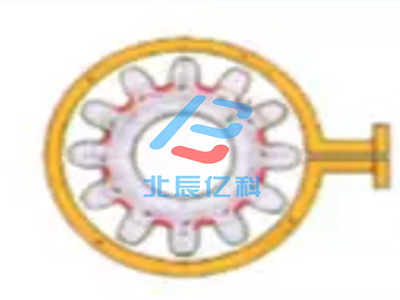
Intermediate frequency induction heating treatment
Application of Synchronous Double Frequency Induction Heating Technology in Quenching
In order to solve the confusion in the process of single-frequency induction heating and then processing complex surface hardening processes like gears, through continuous exploration and experimentation, synchronous dual-frequency induction heating technology has gradually emerged. This is a true sense of induction hardening technology for gear surfaces. In recent years, foreign synchronous dual-frequency induction heating technology has developed rapidly and has been widely used in the heat treatment of complex surface workpieces such as gears in the automotive and aerospace industries. Synchronous dual-frequency induction heating technology is to simultaneously use two different frequencies (high frequency and intermediate frequency) to heat treat a workpiece on an induction coil. The synchronous dual-frequency induction heating power supply includes a HF (high frequency) and an MF (intermediate frequency) power supply with normal power output. It adopts IGBT technology and superimposes high frequency oscillation on the basis of medium frequency oscillation. In addition, the power of HF (high frequency) and MF (intermediate frequency) can be continuously debugged from 2% to 100% respectively. It adopts integrated PLC control and has multiple program time and power settings, which is especially suitable for processing complex edges such as gears. The work task of the animal husbandry press. The output ratio of the two frequencies and the hardening depth at the tooth root and tooth surface can be adjusted according to the processing requirements of the workpiece. Saving energy and protecting resources is our eternal goal. Reducing fuel emissions is our goal whenever and wherever possible. "Green" is not only a responsibility for the manufacturing industry, but also requires the efforts of all of us. For manufacturers, reducing energy consumption is a win-win method for developing and improving competitive advantages. For manufacturers, it is not only to reduce production costs, but more importantly, through the use of synchronous dual-frequency induction heating technology, you can intuitively see the reduction in environmental impact. Moreover, the synchronous dual-frequency induction hardening only applies as little energy as possible to the parts that need to be processed, so that the workpiece has only minimal deformation. Our goal is to devote ourselves to the development of new technologies, while in the production process, to better save energy, protect our ecological environment, and then truly achieve "green production"
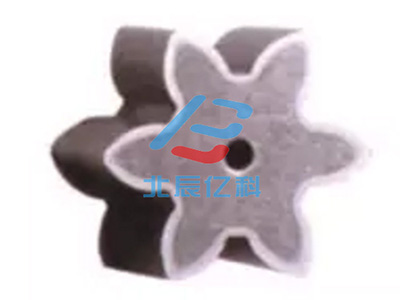 |
| Synchronous dual-frequency induction heating treatment |
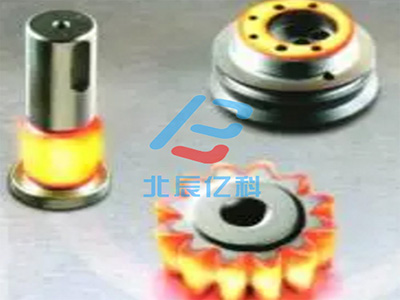 |
| Synchronous dual-frequency induction heating treatment |
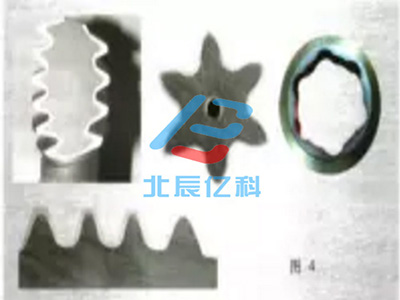 |
| Synchronous dual-frequency induction heating treatment |
Dual-frequency heating technology-the new favorite of international giants
Based on product quality requirements and adherence to environmental protection, Boeing in the United States chooses to use SDF induction hardening technology for some of its gears, such as straight and bevel (bevel) gears. Later, the process similar to grinding teeth will not need to be carried out. World-renowned companies such as the German BMW (BMW) car manufacturer, the German (Volkswagen) car manufacturer, Audi, BOSCH, Siemens, etc. have all used this technology. Some domestic companies are already using it. After the workpiece processed by the synchronous dual-frequency induction heating technology, the slice (see Figure 4) shows that the hardened layer is particularly uniform, which is suitable for gears, worms, hypoid gear shafts with a modulus less than 6, automobile steering devices, automobile CV joints and Many components with complex contours, such as drive shafts, and cross-sections of holes with different diameters.
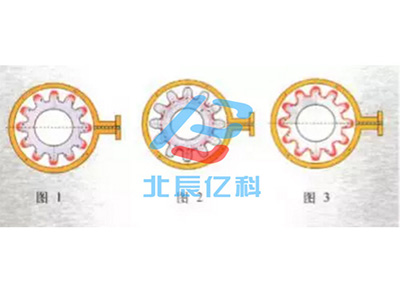
Comparison of single-frequency heating and simultaneous dual-frequency heating treatment


 Scan and follow!
Scan and follow!